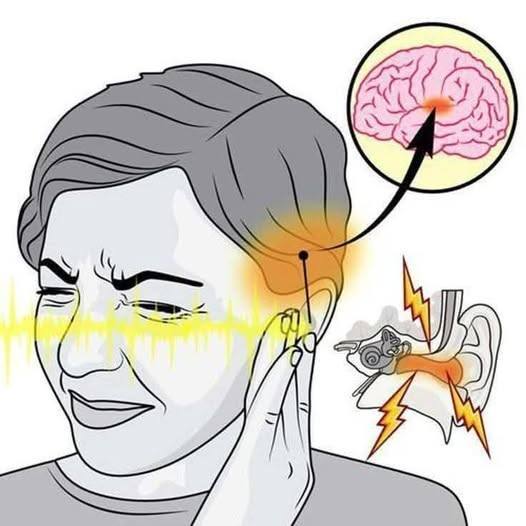Ear pain from loud sounds is something most people have experienced at some point in their lives, whether from attending a concert, being near heavy machinery, or being exposed to sudden, high-decibel noises. This discomfort can range from a mild irritation to excruciating pain, and while it may seem temporary, there can be long-term consequences to the health of your hearing. This article dives into the science of ear pain, the risks of loud sounds, and how prolonged exposure to noise can lead to permanent hearing damage. If you’ve ever wondered why your ear hurts after being exposed to a loud sound, understanding the mechanisms behind it can help you protect your hearing health.

The Science Behind Ear Pain
Ear pain caused by loud sounds is typically a result of damage to the delicate structures inside the ear. The ear is composed of three main parts: the outer ear, the middle ear, and the inner ear. The outer ear consists of the visible portion, the ear canal, and the eardrum. The middle ear contains the three small bones (ossicles) that transmit sound vibrations from the eardrum to the inner ear. Finally, the inner ear holds the cochlea, which contains tiny hair cells responsible for converting sound vibrations into electrical signals that are sent to the brain.
When loud sounds, such as those exceeding 85 decibels (dB), enter the ear, they create vibrations that can overstimulate the structures in the ear. The eardrum may stretch, or the vibrations may be too intense for the cochlea’s hair cells, leading to temporary or permanent damage. This overstimulation is perceived as pain or discomfort, a warning signal from the body that the noise level is too high for safe hearing.
How Loud Sounds Cause Pain
The pain you feel in your ear from loud noises is a defense mechanism. When exposed to sounds that are too loud, the body tries to protect the ear by limiting sound transmission. The muscles around the middle ear may contract to dampen the vibrations, but this natural response isn’t always enough to prevent harm. Prolonged exposure to loud sounds, such as attending a concert or working in a noisy environment, can lead to the damage of the ear structures, particularly the cochlea, which cannot regenerate its hair cells once damaged.
Exposure to sounds above 120 dB, such as those from jet engines or gunshots, can cause immediate damage to the ear, resulting in ear pain, temporary hearing loss, or tinnitus (ringing in the ears). This is because these sounds create a pressure wave that is too powerful for the ear to handle, leading to mechanical damage to the ear structures.
The Threshold of Safe Sound Exposure
Sound intensity is measured in decibels (dB), and while noise can cause discomfort at varying levels, the risk of long-term damage increases with higher sound intensities and longer exposure times. Here’s a breakdown of sound levels and their associated risks:
-
30-40 dB: Normal conversation or background noise – Generally safe, no risk of hearing damage.
-
50-60 dB: Standard office environment or a quiet room – Safe for extended periods.
-
70-85 dB: City traffic or a vacuum cleaner – Prolonged exposure (8+ hours) can cause hearing damage.
-
85-100 dB: Heavy machinery or power tools – Risk of damage increases with exposure of over 2 hours.
-
100-120 dB: Concerts, loud music, or lawnmowers – Exposure of even 15 minutes can lead to hearing damage.
-
120+ dB: Gunshots, jet engines, or fireworks – Immediate damage can occur with just a single exposure.
The Occupational Safety and Health Administration (OSHA) guidelines recommend limiting exposure to sounds above 85 dB to prevent hearing damage. This is why individuals working in noisy environments, such as construction sites or factories, are required to wear hearing protection.
Temporary vs. Permanent Ear Pain
Not all ear pain from loud sounds is permanent. In many cases, the pain you feel after exposure to loud noises is temporary, and your hearing may return to normal once the ear recovers. However, repeated exposure to loud sounds can lead to permanent damage. Here’s the difference between temporary and permanent ear pain:
-
Temporary Ear Pain: After exposure to loud sounds, you may experience a dull ache or fullness in the ear, along with muffled hearing or a ringing sensation (tinnitus). These symptoms usually subside within a few hours to a couple of days. The ear has endured overstimulation but has not suffered irreversible damage.
-
Permanent Ear Damage: If loud sound exposure continues over time, the structures inside the ear, especially the hair cells in the cochlea, may become permanently damaged. This can result in long-term hearing loss and chronic tinnitus. Once these hair cells are destroyed, they do not regenerate, which means the damage is irreversible.
Protecting Your Ears
The best way to prevent ear pain from loud sounds is through proper ear protection and sound management. Here are a few tips to protect your hearing:
-
Use Ear Protection: If you work in a noisy environment or plan to attend a concert, use earplugs or earmuffs to reduce the intensity of the sound entering your ears. There are different types of ear protection available, including those designed for musicians, construction workers, and general use.
-
Follow the 60/60 Rule: When listening to music through headphones, follow the 60/60 rule—keep the volume at no more than 60% of maximum and limit listening time to no more than 60 minutes at a stretch. This helps reduce the risk of hearing damage.
-
Take Breaks: If you are in a noisy environment, take breaks to give your ears a chance to recover. Step away from the noise for a few minutes and let your ears rest.
-
Limit Exposure: Try to avoid prolonged exposure to loud sounds, especially those over 85 dB. This includes staying away from noisy areas or using noise-canceling headphones in loud environments.
-
Seek Medical Attention: If you experience ear pain, discomfort, or ringing in the ears after exposure to loud sounds, consult a healthcare professional. Early intervention can prevent further damage and help you manage symptoms.
The Link Between Ear Pain and Hearing Loss
Hearing loss is a common consequence of prolonged exposure to loud sounds. This condition, known as noise-induced hearing loss (NIHL), occurs when the hair cells in the cochlea are damaged due to excessive sound exposure. Symptoms of NIHL include:
-
Difficulty understanding speech, especially in noisy environments
-
Ringing or buzzing in the ears (tinnitus)
-
Turning up the volume on the television or radio higher than usual
-
Feeling like you have to strain to hear conversations
Once hearing loss occurs, it cannot be reversed, making prevention essential. The World Health Organization (WHO) estimates that 1.1 billion young people worldwide are at risk of hearing loss due to unsafe listening practices, such as listening to music at high volumes through headphones or attending loud events without ear protection.
Conclusion: The Importance of Ear Health
Ear pain from loud sounds is not just a minor inconvenience—it’s a signal from your body that your hearing may be at risk. Protecting your ears from harmful noises is vital to maintaining long-term hearing health. Whether you are exposed to loud sounds at work, during leisure activities, or in everyday life, taking steps to safeguard your ears can help prevent irreversible damage. Remember, hearing loss is permanent, but it is also preventable. By following simple precautions, you can enjoy your favorite activities without putting your hearing at risk.
Always listen to your body and seek medical advice if you experience ear pain or discomfort after exposure to loud sounds. The more informed you are about the risks of loud noise, the better equipped you’ll be to protect your hearing and preserve your quality of life.


